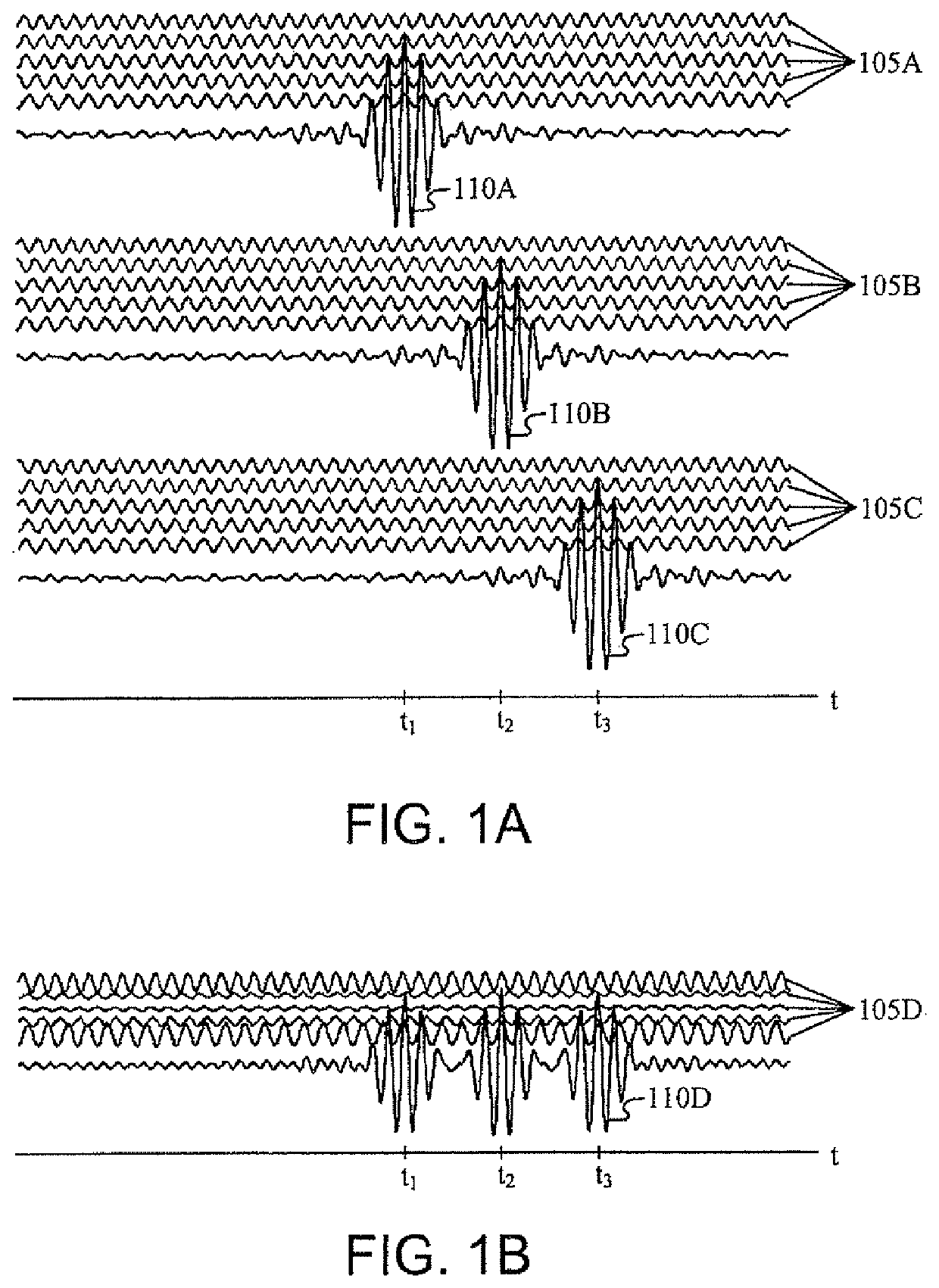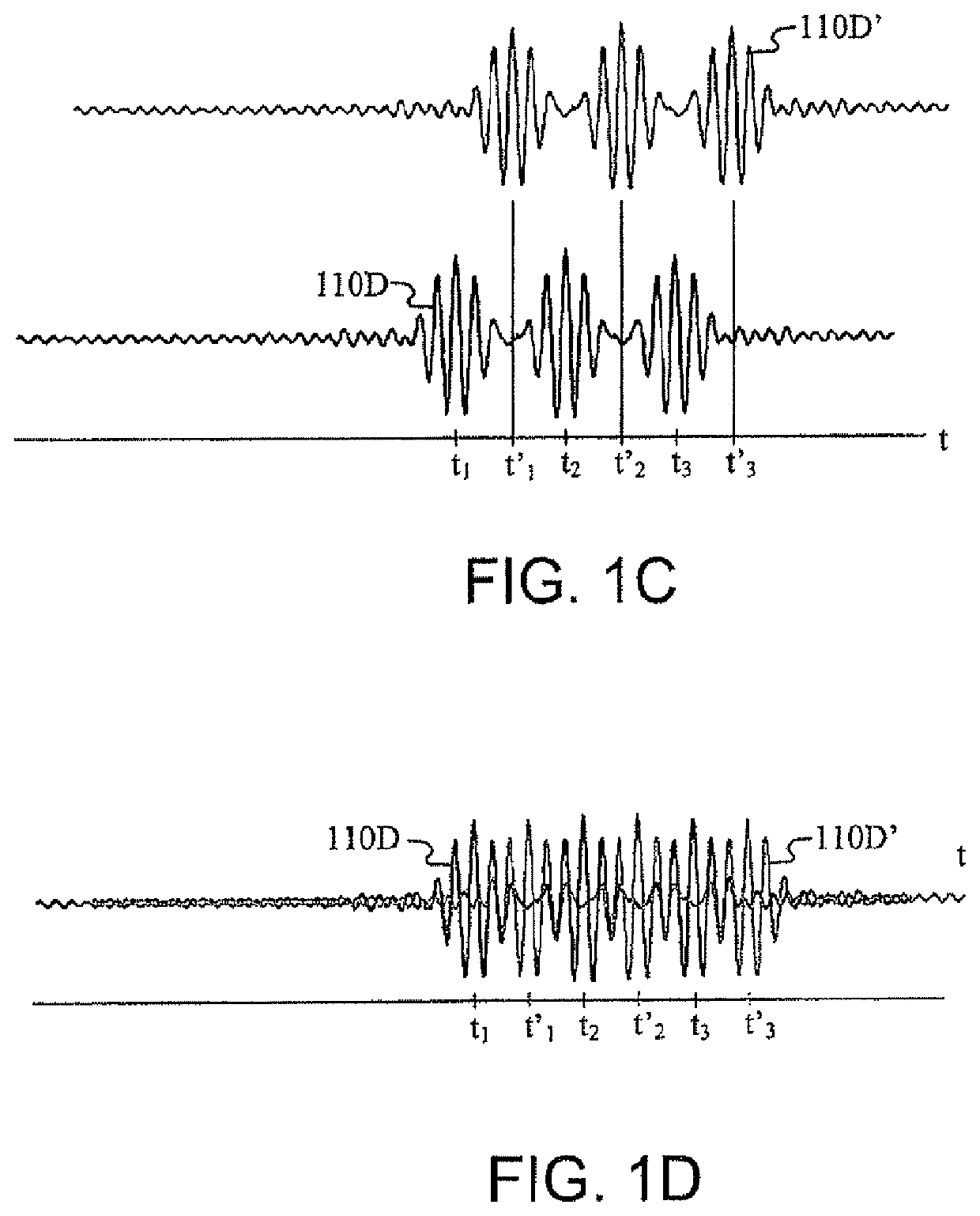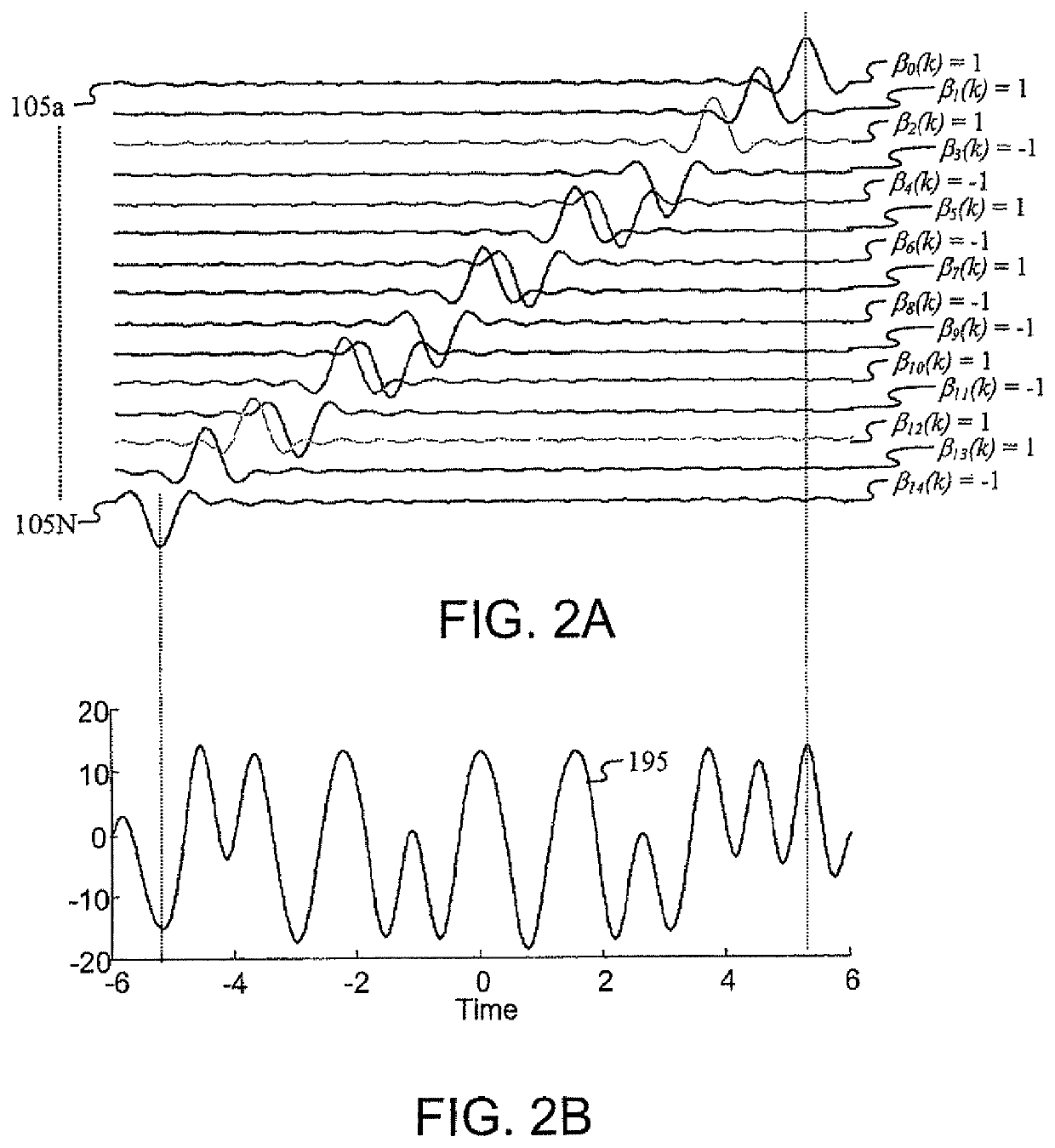Multicarrier sub-layer for direct sequence channel and multiple-access coding
a sub-layer and channel technology, applied in the field of direct sequence code division multiple access (dscdma), direct sequence spread spectrum (dsss), multi-carrier spread spectrum communication, can solve the problems of multi-path fading, symbol interference, delay greater than the duration, etc., to reduce the cost of antenna infrastructure deployment, reduce the cost of the overall system, and improve system performance
- Summary
- Abstract
- Description
- Claims
- Application Information
AI Technical Summary
Benefits of technology
Problems solved by technology
Method used
Image
Examples
Embodiment Construction
[0274]The description of the preferred embodiments assumes that the reader has a familiarity with CI described in the following publications, which are incorporated by reference:[0275]B. Natarajan, C. R. Nassar, S. Shattil, M. Michelini, “Application of interferometry to MC-CDMA”, accepted for publication in IEEE Transactions on Vehicular Technology.[0276]C. R Nassar, B. Natarajan, and S. Shattil, “Introduction of carrier interference to spread spectrum multiple access,” IEEE Emerging Technologies Symposium, Dallas, Tex., 12-13 Apr. 1999. B. Natarajan and C. R. Nassar, “Introducing novel FDD[0277]FDM in MC-CDMA to enhance performance,” IEEE Radio and Wireless Conference, Denver, Colo., Sep. 10-13, 2000, pp. 29-32.[0278]Z. Wu, C. R. Nassar, A. Alagar, and S. Shattil, “Wireless communication system architecture and physical layer design for airport surface management,” 2000 IEEE Vehicular Technology Conference, Boston, Mass., Sep. 24-28, 2000, pp. 1950-1955.[0279]S. Shattil, A. Alagar...
PUM
 Login to View More
Login to View More Abstract
Description
Claims
Application Information
 Login to View More
Login to View More - R&D
- Intellectual Property
- Life Sciences
- Materials
- Tech Scout
- Unparalleled Data Quality
- Higher Quality Content
- 60% Fewer Hallucinations
Browse by: Latest US Patents, China's latest patents, Technical Efficacy Thesaurus, Application Domain, Technology Topic, Popular Technical Reports.
© 2025 PatSnap. All rights reserved.Legal|Privacy policy|Modern Slavery Act Transparency Statement|Sitemap|About US| Contact US: help@patsnap.com



